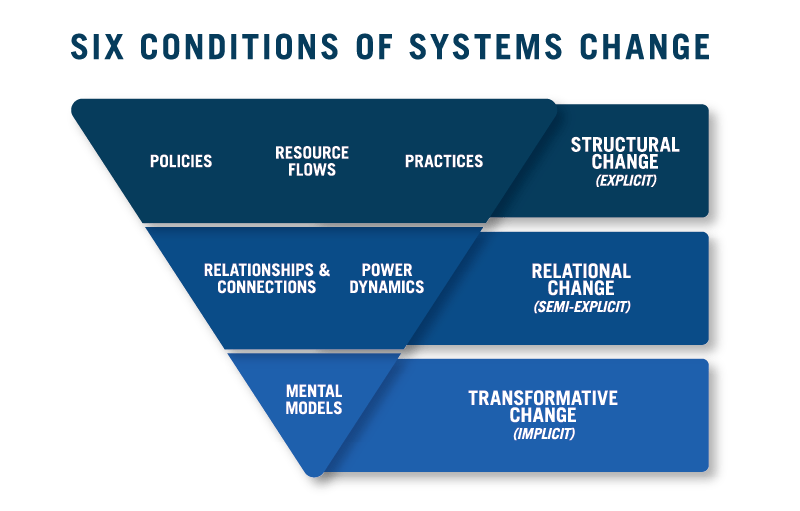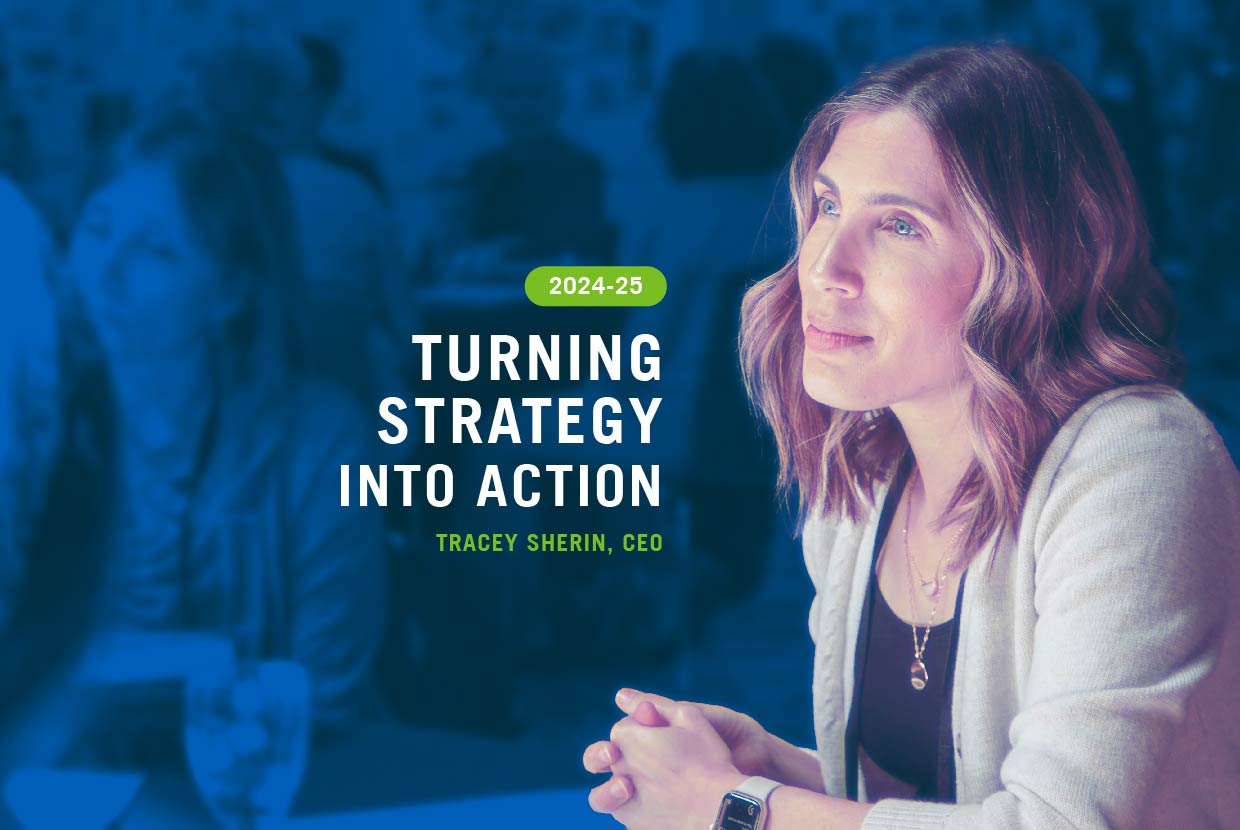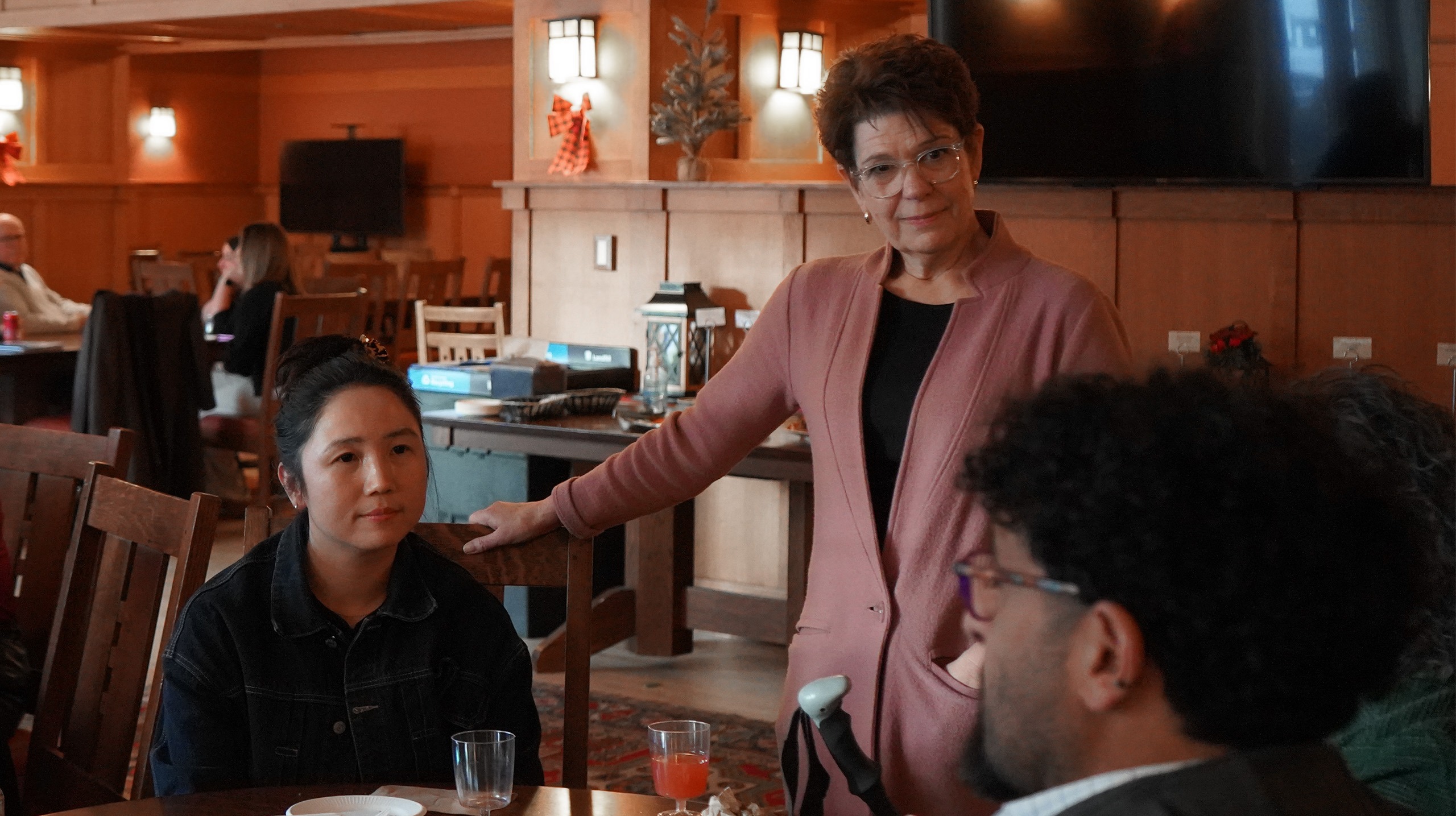Change moves at the speed of trust.
– Stephen Covey
There is a consensus among health system leaders and improvers that trust is a critical part in the machine of large-scale complex change. But how do we intentionally build trust? Trust building can be tricky, but there is one thing we know for sure — trust and relationships need time and space for deliberate and consistent interaction and conversation. This is especially true in complex system change.
Complex Systems
Health systems are increasingly being recognized as complex systems. Complex systems are often faced with “wicked problems” — problems that have no single or clear root cause and where attempts to fix them frequently fail. There are often multiple or competing stakeholders in these systems and solutions are varied. Complex systems are never “fixed” but are in a constant state of flux. More and more health system improvers are recognizing that these complex challenges need new approaches, new tools, new ways of solving these ever-increasingly complex challenges. The Health Quality Council in Saskatchewan (HQC) and NHS Horizons in the UK are working together strategically to explore these approaches and how they can be integrated into more traditional quality improvement methodologies.
A Prerequisite for Improvement
Deliberate collaboration and strong relationships are fundamental to improving the ways complex systems operate and the outcomes they produce. In a recent study conducted by the Warwick Business School (UK), researchers identified six key lessons from a landmark study. By studying the Virginia Mason Medical Centre and the NHS Systems in their sustained improvement journey, they concluded that “In quality improvement, relationships are not a priority, they are a prerequisite.” This study generated five key insights into the importance of relationships:
- Connectedness and types of relationships matter for improvement
- High performing organizations embodied a densely connected network with high capacity to facilitate knowledge exchange/collaboration for innovation and improvement
- Organization’s social network emerges from day-to-day interactions of professionals — the basis of “how we do things”
- Network structure influences acceptance, adoption, engagement and sustainability of improvements
- Through relationships, people enact change. Relationships influence sharing, collaboration and sense-making.
Creating the Conditions for Emergence
The case for investing time, energy, and resources into growing high-quality connections between people is becoming ever greater. Relationships are the heartbeat of improvement as they create the conditions for new ideas, innovations, and possibilities to emerge. Healthy interpersonal relationships within our systems at the micro, meso, and macro levels allow us to share more, learn faster, and do better in all aspects of our work.
When you bring people together or “convene” the system around a complex problem and give specific attention to relationship building, there is a special kind of magic that is created. Diverse perspectives are heard, assumptions are challenged, hidden truths are exposed, and insights abound. You also hear bursts of laughter from the table with the “wild idea” that actually…maybe could work?
The intentional building of relationships through system convening is foundational in building a level of trust, a sense of psychological safety, and the ability to approach problems with curiosity and humbleness of “how might we…?” rather than “you will do…” These opportunities create, as Bill Bannear describes, “relational affordances” that allow people to take risks, to be bold, to say what needs to be said, and to speak truth to power.
With relational affordances at the core of problem solving, we make space for emergence. The holy grail of emergence is a paradigm/mindset shift. Donella Meadows writes: “You could say paradigms are harder to change than anything else about a system, and therefore this item should be lowest on the list (of places to intervene in a system), not second-to-highest. But there’s nothing physical or expensive or even slow in the process of paradigm change. In a single individual, it can happen in a millisecond. All it takes is a click in the mind, a falling of scales from eyes, a new way of seeing.”
Similarly, in their model “Six Conditions for System Change”, Kania, Framer and Senge state persistent problems in any system exist at three levels — structural, relational, and transformational. In health and healthcare systems, almost all the focus is on structural change with little attention paid to the other levels. They go on to state “the greatest opportunities for transformation lie in shifting the deeper levels of the systems: relationships and connections, power dynamics, and mental models. Employing these deeper conditions and making systems more inclusive and just for all.”

HQC and NHS Horizons as Relationship Builders
The role of relationship builders in complex systems is to disrupt existing silos and redesign relationships so people, organizations, and resources work together in new ways. This new ‘relational architecture’ is critical to accelerating learning across the system, generating more rapid change, and improving outcomes. For over two decades, HQC and NHS Horizons have provided this important role of relationship builders in our respective health systems. To strengthen our practice, we have entered into a strategic partnership between our organizations and have started with collective work about the core value of relationship to bring about large-scale change.
Through our partnership, we are exploring new and innovative ways to transform health and care through system convening, unique facilitation techniques, rapid insight generation, and network development. This partnership is cultivating a space to share, learn, and create novel transformational practices that create new approaches and foster enduring change. We are committed to sharing knowledge and techniques which emerge from this partnership to help others across the globe.
So What’s Next?
As the critical importance of relationships gains traction to addressing “wicked problems”, we want to shine a light on the why, what, and how of relationships. We encourage you to reflect on the systems you work within — what effort do you invest in relationships to accelerate meaningful change? Do you see relationships as a process to achieve an outcome or are relationships an outcome on their own?
In our next articles, we will explore how we make space relationship building in our health systems and how we are continuing to learn more about the impact on large scale system improvement efforts.
What is this sparking for you? Feel free to join the conversation over on Medium!
Sources:
- Warwick Business School (2022). Leading change across a healthcare system: How to build improvement capability and foster a culture of continuous improvement. Available at: https://warwick.ac.uk/fac/soc/wbs/research/vmi-nhs/reports/report_-_leading_change_across_a_healthcare_system_22.09.2022.pdf
- Meadows, D. (1999). Leverage Points: Places to Intervene in a System. Available at: https://donellameadows.org/archives/leverage-points-places-to-intervene-in-a-system/
- Bannear, B. (2023). The new zeitgeist: relationships and emergence. Available at: https://medium.com/@bill.bannear/the-new-zeitgeist-relationships-and-emergence-e8359b934e0
- Leadbeater, C. & Winhall, J. (2022) The Patterns of Possibility: How to Recast Relationships to Create Healthier Systems and Better Outcomes. System Innovation Initiative — the ROCKWOOL Foundation. Available at: https://static1.squarespace.com/static/632b07749e5eec1fde3510bd/t/6390fc761573755e38254ba3/1670446219995/SII_ThePatternsOfPossibility_2022.pdf



